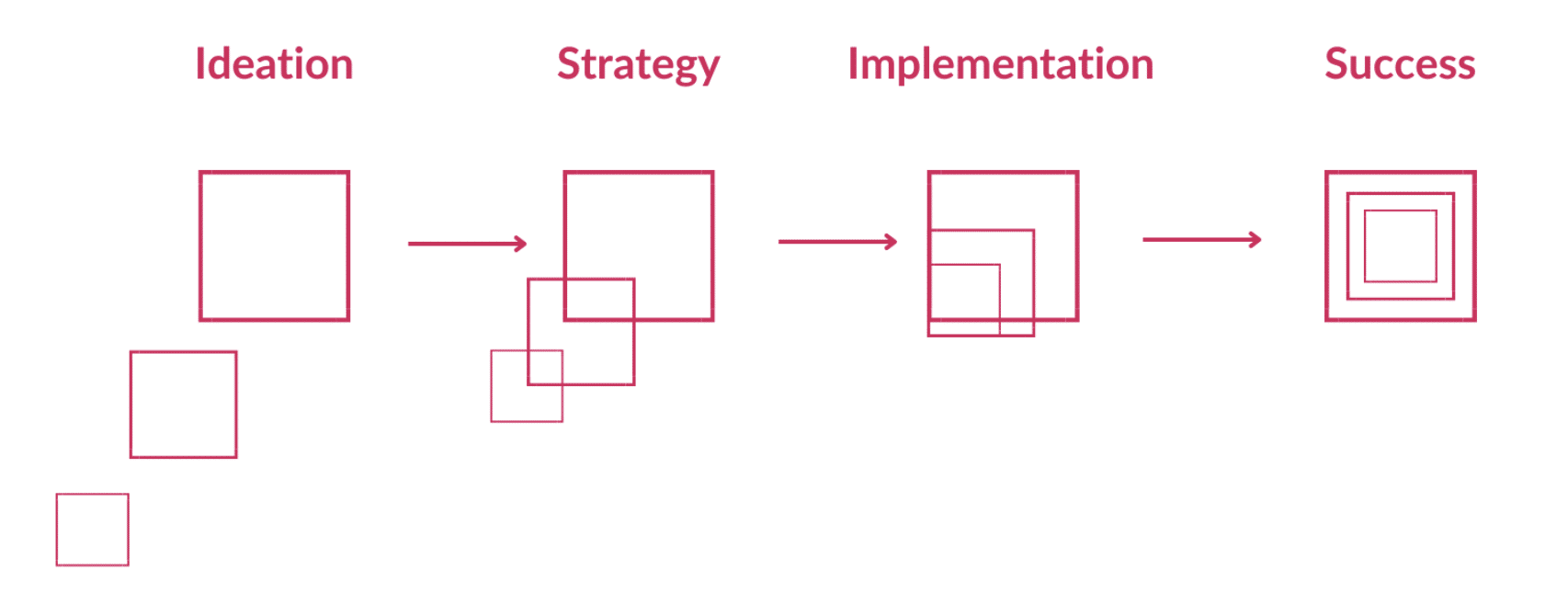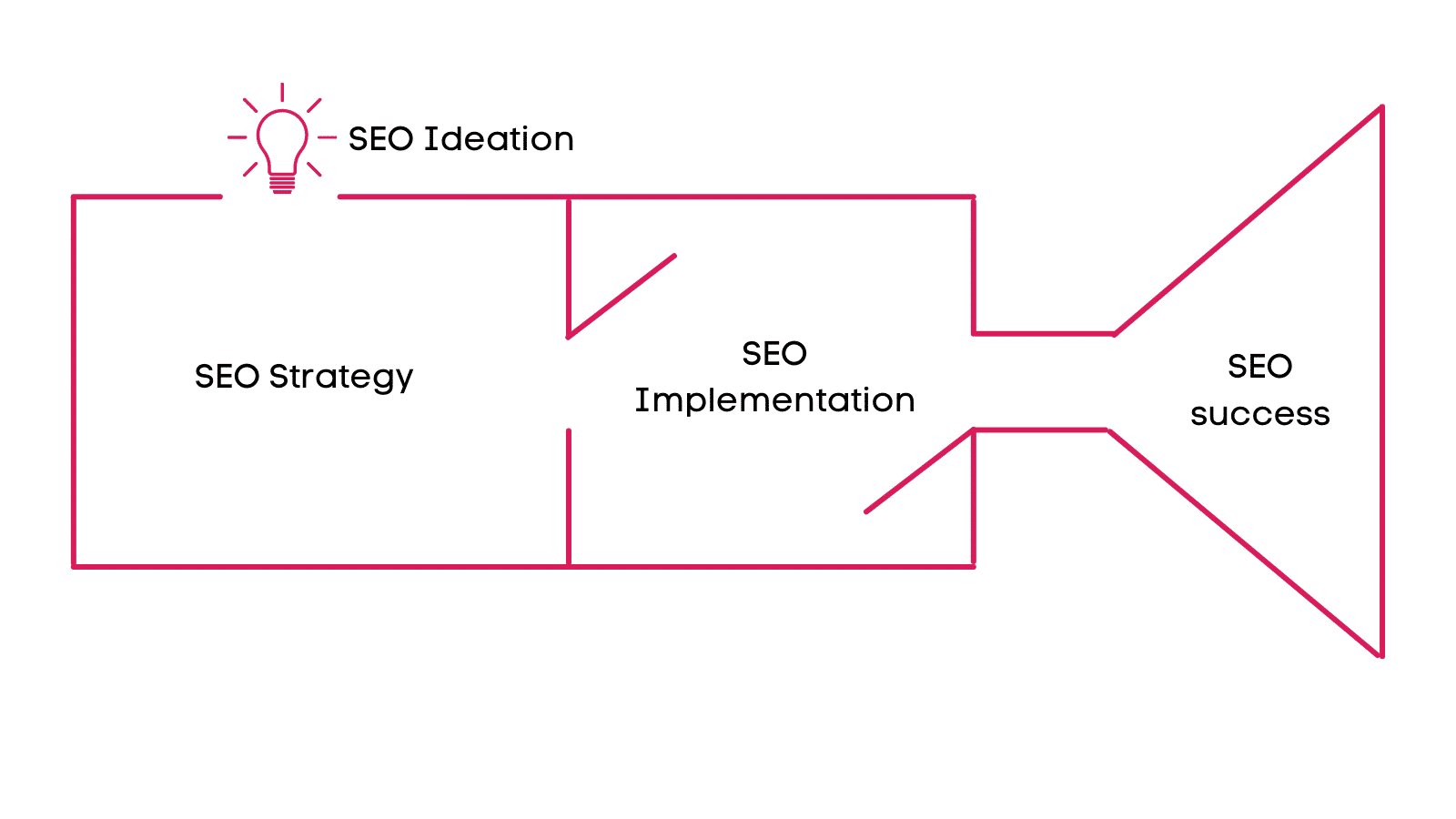I’ve worked in SEO for a long time, and it still shocks me when I ask new clients to see their old agency’s SEO strategy.
99% of the time, nothing is documented.
In this article, I’ll teach you exactly how to create a strategic SEO process that leads to results.
You’ll learn my four-stage process, and I’ll even advise you on what to charge.
Let’s dive in.

An SEO strategy is not a list of deliverables
The spreadsheet is an invention that has made lives a lot easier. But when it comes to SEO strategy, it’s become a lazy tool used to try and deceive people into thinking a list of deliverables is a strategy.
No, strategy is the brain work of SEO.
It’s a combination of ideas, thoughts, insights and experience, all focused on the client to build a data and expertise-backed process for success.
It’s supposed to be hard and challenging.
It’s supposed to put you, the SEO, on the line.
It’s you saying, “Do this, and you’ll succeed.”
An SEO strategy should be documented
On the rare occasion I’ve seen an SEO strategy, it reads more like a mission statement written by a Dalek.
“We will exterminate the competition.”
ChatGPT is more human-like than most SEO strategies. And they tend to be heavy on rhetoric and light on actual research evidence.
This is why you should demand your agency provides evidence of the thought that’s gone into your strategy.
And that’s part of what SEO strategy is. It’s an expert writing down their thoughts.
The goals of SEO – A reminder
It’s often the case that:
- SEO gets very little investment.
- SEOs don’t align their strategies with actual business goals.
For SEO to deliver, it must meet the customers on their journey. In practical terms, successful SEO must result in:
- Capturing as many of today’s category buyers as possible.
- Placing the brand in front of those researching the category.
- Placing the brand in front of as many people as possible who aren’t brand, product or solution aware.
There are some vast delusions out there about how search works and, indeed, how people convert online.
The central myth peddled by SEO gurus is that people convert through blogs.
No, they don’t. They might click on a blog before they purchase.
But your ultimate guide to garden sheds did not make anyone buy one.
People buy when they’re ready to buy.
People buy from brands they believe will supply them with services or goods that meet their expectations.
And people will pay a premium if they believe this reduces the likelihood of failure.
This means there is more than just conversion going on because you write a guide.
No, it’s better to think of conversion as a glass that fills with a liquid certainty, and once that certainty reaches the top, they’re ready to buy.
But here’s the challenge.
Just as their certainty reaches the top of the glass with you, it’s doing the same with some of your competitors.
Eventually, they’ll pick up the glass and drink. And you do all your SEO and marketing in the hope that you can nudge them to pick up your glass.
That’s what’s happening.
So you need to be present on the SERPs as much as possible.
You need a plan to rank for those buyer terms and research terms.
And you need a plan to rank for other content to reach your audience when they’re not in the market.
Do this, and you’ll generate clients’ success.
The 4-step process of strategic SEO

All good SEO stems from using a process. Here's one you can steal:
- Ideation
- Strategy
- Implementation
- Success
Let's break this down.
Step 1: Ideation
Ideation is the fun part of any SEO strategy because it's ideas without friction.
There is no such thing as a bad idea in ideation, and it's now that you play around with the site, its competitors and their niche and wander. You can do this as a team or on your own.
But consider this time as drifting time. Just wander through the site, write down things you notice, and chat with your team.
And then walk away.
Let the information and ideas sit in your brain, and you'll be surprised at what happens next.
You'll find that your existing experience starts to go to work in the background with your new-found discoveries.
And the seeds of strategy are born.
Step 2: Strategy
It's here that you come to the document with your strategy seed.
You have a loose plan to rank the site. You have a budget. You have the skills.
It's now that you commit.
The aim is simple. Write down your seed of an idea...then try and find data to support it.
Analyze the site, the keywords, the links and so on.
If you can't find data to support your approach, bin it. Move on and find another approach to generate results.
Record your progress in your document, write down what you find and take screenshots.
My documented strategies range between 3,000 to 8,000 words long, not including the 100-plus point technical SEO audit I do that doesn't use a tool.
But by the end, you have the strategy, and it's this that goes to clients.
Step 3: Implementation
So, you came up with the strategy; now it's time to make this happen.
As an SEO, you become an SEO and a project manager.
It doesn't matter what you do or outsource; it's your job to ensure the results occur.
You are accountable for the success or failure of the campaign, and that's why your expertise is in demand.
Step 4: Success
Finally, we reached the end of your successful campaign.
If you did a good job, you'd have met the client's goals, and if not, it's entirely right you explain why.
I'm not forgiving of SEOs that don't meet the campaign's goals. Except when the budget doesn't match the goals.
If you're spending $15,000 a month on PPC but only want to spend $1,500 a month on SEO, even though the agency pitched more.
Well, that's the client who takes responsibility. They won't. But it's them that's responsible.
Remember, you can only do what you can with what you have.
A $1,500 budget might take three years to achieve results. Still, you must let the client know.
It’s perfectly OK to tell them their budget isn’t enough to generate results in six or 12 months.
The right strategy often doesn't have the right implementation fuel.
Clients want results, and sometimes they are stuck with poor budgets. As long as they know this, they might use SEO to show how it works and then ask for more budget later.
The problem comes when you have a strategy that will work and tell the clients they will gain results.
OK, how long does creating a good SEO strategy take, and what should you charge?
The price of SEO strategy
I’ve charged $500 for strategy, and I’ve charged $10,000.
Ultimately the size of the site and the value of the business will dictate what you charge and how long it will take.
But here are some tips from the trenches. A good SEO strategy takes hard work.
It’s mentally challenging and arguably the hardest part of SEO.
There are three ways to price strategy.
- An upfront stand-alone cost.
- As part of the retainer.
- As part of the set-up fee.
Each model works well and is a choice.
But you only get Month 1… once.
For years, I ran my own consulting business/agency selling SEO strategies in all the above three models.
It really doesn’t matter which you choose. What does matter is that you ensure the client respects your expertise and pays to access it.
This is what strategy is all about.
However, a top tip is when you sell a stand-alone strategy. Offer three price options.
I used to do this with clients with in-house SEO ability but who wanted a second pair of eyes on their SEO.
Option 1 can be a low-level strategy, option 2 a deeper dive and option 3 can go into UX and more.
How you split the options up is totally up to you.
But what I want every reader to take away from this article is that strategy in SEO matters.
Clients deserve it, and you deserve the time to be strategic.
If it’s not happening, then perhaps you need to change agencies.
And that’s for both the client and the SEOs reading this.
The post How to build a strategic SEO process appeared first on Search Engine Land.
source https://searchengineland.com/build-strategic-seo-process-427972

0 Comments